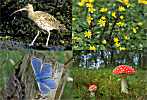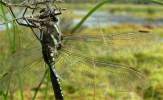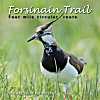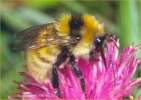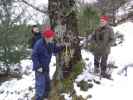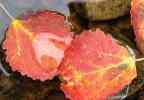 | Caithness.Org | Community | Business | Entertainment | Caithness... | Tourist Info | Site Map |
• Advertising • Chat Room • Contact Us • Kids Links • Links • Messageboard • News - Local & Scottish • News - UK & News Links • About / Contact Us • Submissions |
• Bookshop • Business Index & News • Jobs • Property For Sale • Property For Rent • Shop • Sutherland Business Index |
• Fishing • Fun Stuff • George, The Saga • Horses • Local Galas • Music • Pub Guide • Sport Index • What's On In Caithness |
• General Information • B & Bs • Backpackers • Caravan & Camping • Ferries • Getting Here • Holiday Letting • Hotels • Orkney • Pentland Firth • Sutherland • Taxis |
| N E W S F E E D S >>> |
|
NATURE AND ENVIRONMENT
HIGHLAND BIODIVERSITY - Caithness &
Sutherland
|
Where Did "Biodiversity" Come From?
CAITHNESS AND SUTHERLAND BIODIVERSITY
Links
Green
Facts Highland Biological Recording Group Birds
Coastal Earth Heritage
|
Discuss Issues Or Share Information In Our  If you have ever wondered what is flying around your garden or home in Caithness but never could find out then there is fantastic resource web site www.caithnessmoths.org.uk that can help. The Caithness Moths web site has photos and descriptions of a huge range of moths in Caithness . The web site is still growiing and asks for help in obtaining more good photographs of moths not yet photographed. So if you want to know what is flying around in Caithness in any month of the year just check the month. This site has an amzing amount of infomration on an area of biodiversity that is all around us and often overlooked. You can also add your items to the Biodiversity section in our forum on moths or any other apsect of nature in Caithness.
21 September 09 Chairperson Councillor Audrey Sinclair said: “The Partnership is made up of representatives of around 30 local groups and organisations committed to understanding, safeguarding, restoring and celebrating biodiversity within Highland. Our purpose is to provide guidance and support to the existing network of Local Biodiversity Groups, and to make progress on the main issues facing wildlife in the Highlands. It is this last point that we hope to address through this Plan. “The Plan lists the key strategic biodiversity issues that have been brought to our attention since the Partnership started in 2005, states what we have done so far to address them, and proposes a range of future actions that we’d like to undertake in the next three years. We are of course bound by limits on the budget and resources that our partners can muster in these difficult times, but nonetheless we are confident that we can achieve a lot by working together and planning ahead.” The draft Plan can be viewed by visiting www.highlandbiodiversity.com and clicking on the Highland Biodiversity Partnership tab. Paper copies are available at Council Service Points, Museums and Libraries, or by contacting Biodiversity Officers Jonathan Willet and Janet Bromham, tel 01463 702274 e-mail janet.bromham@highland.gov.uk The closing date for comments is 31 October 2009.
27 July 09 Common Hawkers are widespread throughout the Highlands and live on the wing from June to October. The male has blue and yellow markings on a black background and is often seen flying far away from a ponds or lochans. It is the second biggest dragonfly found in the Highlands. The biggest is the Golden-ringed Dragonfly, which is 7.5cm long and as its name suggests it is black and yellow. Jonathan Willet, The Highland Council’s Biodiversity Officer, who found the pond said: “Being a bit of a dragonfly enthusiast this was a really exciting find, I always have an eye out for dragonflies and was really surprised to see a female egg laying in this pond. Being so high up this must be close to the height limit for breeding in the UK.” Jonathan added: “This species does breed very high up in continental Europe, up to 2700 metres in the Swiss Alps, but the summers are a lot warmer there! The pond is found in a sheltered location in a south facing corrie, so this must create a warm microclimate within the pond allowing the larva to develop, but it may spend 5 years as a larva before it is fully grown and ready to emerge as an adult, which may only live for 3 to 4 weeks.” Councillor William Ross, Chairman of the Planning, Environment and Development Committee said: “This is a fascinating record and it is surprising that such a heat-loving insect can be found so high up. It just goes to show that there is still much to learn about the natural world of the Highlands.” For those wanting to learn more about the 18 species of dragonflies and damselflies found in the Highlands a leaflet on these insects has just been produced by The Highland Council and the British Dragonfly Society. This leaflet is available in all the Highland’s libraries, Service Points and Tourist Information Centres, or you can request a copy from Jonathan Willet at jonathan.willet@highland.gov.uk or 01463 702274. Dragonflies and damselflies very are closely related. Damselflies are about the size of a matchstick with eyes at the side of their head and when at rest they hold their wings closed at the sides of their abdomen. Dragonflies are about twice the size and much chunkier, they have large eyes that meet in the middle and when at rest hold their wings open at right angles to their body. The British Dragonfly Society is encouraging volunteers to participate in survey work to compile an Atlas of the distribution of dragonflies and damselflies in the UK. The Atlas will be produced in 2011. For more information see www.dragonflysoc.org.uk
6 July 09
15 June 09 The Partnership was set up to provide guidance and support to a network of local biodiversity groups, and make progress on the key strategic biodiversity issues in Highland. Funding has been secured to help the Partnership's network of local groups undertake wildlife projects across the Highlands. Over the next three years, £100,000 will be spent on a capacity building project to help local biodiversity groups in Caithness, Sutherland, Wester Ross, Ross & Cromarty (East), Skye & Lochalsh, Lochaber, and Inverness & Nairn. Highland Councillor Audrey Sinclair who chairs the Highland Biodiversity Partnership said: "The groups are very dependant on the goodwill of volunteers and local council and agency staff. This project will help them broaden their membership and build their capacity by raising awareness and spreading good practice. It will help the groups identify and work up new projects that help local people understand, safeguard, restore and celebrate biodiversity in their area." The capacity building project is funded with assistance from the Highland LEADER 2007-13 Programme, The Highland Council, Scottish Natural Heritage and RSPB Scotland. Councillor Sinclair added: "The groups are already all working on projects ranging from biodiversity competitions and growing native trees in primary schools in the north, to wildlife counts projects and green space audits in the south; from the control of invasive, non-native species in the west, to the provision of advice on improving habitats for grey partridge to farmers in the east." These projects form the 'Communities Project for Highland Biodiversity' which is a three year programme put together by the Highland Biodiversity Partnership to provide funding for 24 local projects. It is supported by the National Lottery through the Heritage Lottery Fund, and receives match funding from Highland Council, Scottish Natural Heritage, Highlands & Islands Enterprise and RSPB Scotland. Anyone wishing to get involved should contact biodiversity officers Janet Bromham or Jonathan Willet at the Council headquarters in Inverness (tel: 01463 702274), or visit the website www.highlandbiodiversity.com for more information.
29 May 09
28 April 09 Members include the Highland Council countryside rangers, representatives from:- Scottish Natural Heritage, R.S.P.B., Forestry Commission Scotland, The Environmental Research Institute, and the Scottish Environment Protection Agency. As well as the professionals, we have members who are enthusiastic skilled amateurs and they provide inspiration to all the group.
What do we do?
In 2009 we are continuing our work with
schools, wildflower habitat enhancement and are focusing on Bumblebees.
Biodiversity week 16th - 24th May 2009 For times and venues and to register your interest, please contact:- The secretary, Caithness Biodiversity Group tel: 07724989423 or email: phyllidaq@btinternet.com
17 February 09 |



